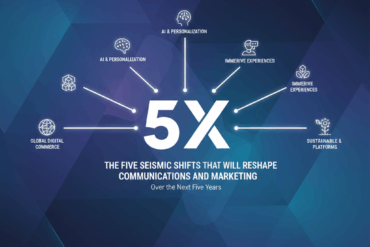By Jodie Cook,
Think of your LinkedIn profile as a pitch for your business. What’s it telling your potential clients? Every time one lands on it, you’ve got a few seconds to prove you’re worth their time before they go and find someone who actually gets it. Don’t leave this to chance. You decide whether you land the meeting or lose the prospect forever.
If you don’t know what you’re doing on LinkedIn, you could cause problems for your personal brand. You are overlooked for opportunities, you waste money on other marketing channels, and you give off the wrong signals that undermine your work.
Your LinkedIn is not a digital resume. It’s more than that. If you simply upload your work history and add a passable headshot, high-value relationships will never materialize. Fix these five credibility killers and watch how fast the right people start paying attention.
Your LinkedIn profile needs to work harder than you do: here’s how
Generic headlines waste prime real estate
Your headline appears in eight places on LinkedIn. In search results, comment sections, connection requests, and message previews. Yet most people squander this visibility on meaningless job titles. “Marketing manager | Digital strategist | MBA” tells me nothing about the problems you solve or the value you create. You’re undermining yourself by being generic, showing clients you don’t really get it. Stop using the most valuable real estate on your profile to blend in.
Write a headline that makes your ideal client stop scrolling. Name exactly who you help and what transformation you deliver. “I help SaaS founders double revenue without doubling their team” beats “Business consultant” every time. Get specific about your superpower. The right people need to recognize themselves in your headline within two seconds.
Profile photos from your cousin’s wedding
Amateur hour arrives when your profile picture looks grabbed from last weekend’s barbecue. You can still see someone else’s shoulder in the frame. Professional credibility tanks when you show up looking unprepared. You wouldn’t arrive at a client meeting in a wrinkled t-shirt. Why let that be their first impression online?
Invest in a proper headshot that positions you as the expert you claim to be. Wear what you’d wear to close a six-figure deal. Look directly at the camera like you’re making eye contact with your next client. Profiles with professional photos get 21 times more views and 36 times more messages. Your photo either opens doors or keeps them locked. Choose accordingly.
About sections written by robots
Third-person bios make you sound like you hired your assistant to write about you. “John is a results-driven professional with 15 years of experience” creates instant distance between you and the reader. Nobody talks about themselves like that in conversation. Your about section should feel like the start of a meaningful dialogue, not a Wikipedia entry.
Write directly to one person, and open with their biggest challenge. Follow immediately with proof you can solve it. Share specific client wins using numbers they care about. Break up text walls with single-line punchy paragraphs. End with exactly what they should do next. If someone can’t understand how you’ll change their business within 30 seconds of reading, you’ve already lost them.
Experience sections that list duties
If your LinkedIn experience section reads like a job description instead of a victory lap, something has to change. “Responsible for managing social media accounts” means nothing, and it undersells the work you actually did. “Grew Instagram following from 5k to 50k in 6 months, generating $2million in attributed revenue” tells a story that grabs attention. Every position should showcase what you achieved. Don’t make readers have to fill in the gaps.
Transform your work history into a results showcase. Lead with the outcome, then explain how you created it. Include specific metrics, percentages, and dollar amounts. Show the scale of businesses you’ve impacted. Say you “increased sales by 67% in Q4 2023 by implementing a LinkedIn outreach strategy that generated 143 qualified leads.” Make your track record impossible to ignore. Make this section do you justice.
Dead recommendations and empty skills
Recommendations from 2018 might as well be ancient history. Outdated endorsements signal you peaked years ago and haven’t done anything worth talking about since. But we both know that’s not true. Skills sections filled with buzzwords like “leadership” and “communication” waste space that could showcase your actual expertise. Your profile should radiate with current energy based on what you actually do today.
You are awesome, so get up to date. Request fresh recommendations from clients you’ve helped transform in the last six months. Guide them to share specific results and transformations. Replace generic skills with niche expertise that sets you apart. “B2B LinkedIn lead-generation” beats “marketing.” Feature case studies, client wins, and recent content that proves you’re actively creating value right now. LinkedIn profiles should be living documents, not time capsules.
Your LinkedIn reputation builds one profile section at a time
Professional credibility evaporates when LinkedIn headlines overflow with meaningless buzzwords instead of clear value propositions, instantly signalling surface-level thinking to potential connections. Wedding photos cropped for profile pictures display a fundamental misunderstanding of professional standards, while third-person about sections create distance instead of connection. Outdated recommendations suggest professional stagnation, especially when paired with generic banner images that match countless other profiles. Oversights compound into a mediocre profile. And that’s not you. Fix your LinkedIn profile and watch how quickly the right opportunities find you.
Feature image credit: Getty
By Jodie Cook
Find Jodie Cook on LinkedIn. Visit Jodie’s website.

